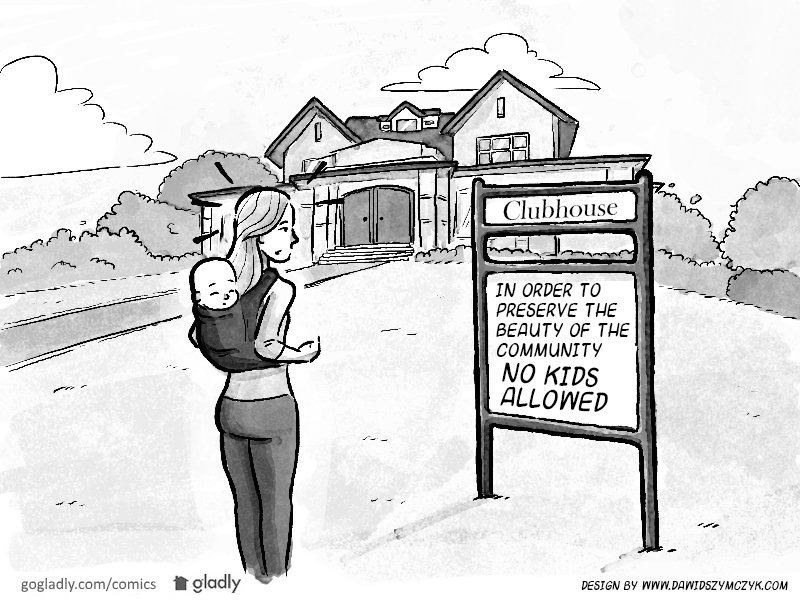It’s not uncommon for homeowner associations to adopt rules that violate federal and state fair housing laws, or the Fair Housing Act (the “FHA”). Violations of the FHA can bring severe penalties, as demonstrated in a recent case where an individual was awarded damages in excess of a hundred of thousand dollars against an HOA.
Common HOA Rules That Could Violate Fair Housing
The FHA protects people from discrimination based on race, religion, color, sex, national origin, familial status, disability, or source of income. Probably the most common FHA violations found in HOA rules concern discrimination based on familial status. Classic examples include: adult swim time hours for the pool, not allowing minor age children in the clubhouse or exercise room without adult supervision, and banning bikes, skateboards, and scooters from sidewalks within the HOA community. Even though many governing boards adopt such rules with good intentions, these rules are primarily directed towards families with children and will likely be found as discriminatory.
Relying on Standards of Third Parties when Creating Rules
When governing boards adopt rules, the language of the rules should be facially neutral (meaning that they apply to individuals regardless of ages and membership in other protected classes) and not have a disparate impact (meaning that even a facially neutral rule applies at a much higher rate to members of protected classes). However, there are instances where rules may include language that applies to a certain age or class of individuals without giving rise to discrimination. These instances generally apply when an HOA relies on standards and guidelines of third parties when drafting and adopting rules.
For example, a local health code may require that children under a certain age be supervised when in a pool when no lifeguard is on duty. An HOA may use similar language to that of the local health code in its rules. Keep in mind that if the local health code does not specifically require that children be supervised by an adult, then the HOA’s rule should allow for a child to be supervised by an older sibling (i.e. a 15-17 year old) or other responsible individual.
There are often concerns about the safety of individuals riding bikes, skateboards, and scooters on community sidewalks. I am aware of an HOA that has several blind corners and had a history of prior accidents involving bicycles, skateboards, and scooters on the HOA’s sidewalks. This HOA contacted its insurance company which drafted a letter addressing safety concerns of the bicycles, skateboards, and scooters being operated on the community’s sidewalks and, in reliance on this letter, the HOA adopted a rule banning bicycles, skateboards, and scooters from being operated on the sidewalks. An owner later challenged the rule as discriminatory, but the local investigative authority found the letter from the insurance company addressing the safety issues and uniqueness of the HOA as support for the rule and determined that the rule prohibiting these vehicles on the sidewalks was non-discriminatory.
This same logic may apply when analyzing rules concerning exercise rooms, clubhouses, or other areas of the community. If an HOA looks to an independent third party’s standards and guidelines (i.e. manufacturer’s suggested height, weight, or age for use of equipment, letter from insurance company addressing safety and insurability issues, etc.), then the HOA may be justified in adopting rules to protect against harm without rising to the level of discrimination.
Good Rule of Thumb
A valuable strategy for board members is to carefully review their HOA’s governing documents with legal counsel and other industry professionals on a regular basis to ensure that the HOA’s rules and other governing provisions comply with the fair housing laws while balancing safety issues that your HOA must address. Keep in mind that the best rule of thumb is to adopt rules that are facially neutral and do not have a disparate impact on a protected class; however, as noted above, instances may apply where non-neutral rules may be found to be non-discriminatory when based on other safety factors.
- Don’t Let Your Rules Violate Fair Housing - November 24, 2015



 Help
Help